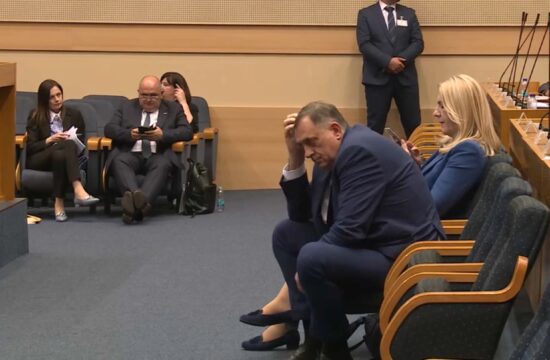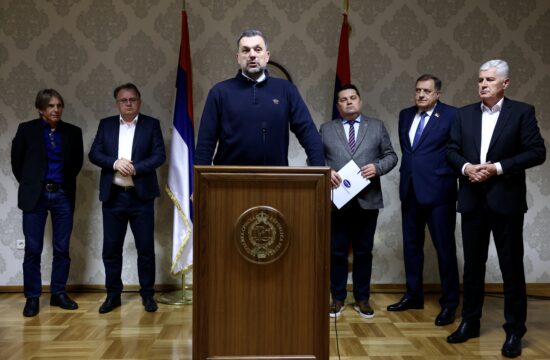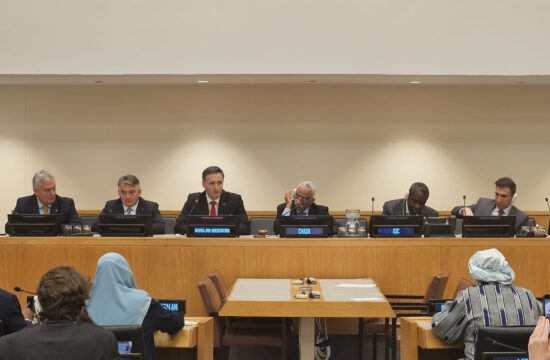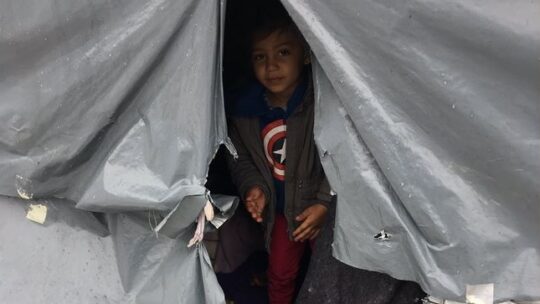
Bosnia’s Serb-dominated part was “legalised in Turkey,” former member of Bosnia’s tripartite Presidency and former Mayor of Sarajevo, Ivo Komsic, told N1 on Wednesday.
Since he was the Croat Presidency member at the time it was signed, Komsic spoke about the events that preceded the signing of the Dayton Peace Agreement, which ended the 1992-1995 war in Bosnia.
He explained that Muhamed Sacirbegovic, the then-Foreign Affairs Minister of the Republic of Bosnia and Herzegovina, as the country was called at the time, “legalised Republika Srpska” in negotiations mediated by US diplomat Richard Holbrooke.
Republika Srpska (RS) is one of the two semi-autonomous entities composing the country and is populated mainly by Bosnian Serbs. The other entity is the Federation (FBiH), which is mostly shared by Bosniaks and Bosnian Croats.
The negotiations on the future of Bosnia initially did not include any entity division of the country, Komsic said, adding that Bosnia’s representatives then struck several compromises.
“Nobody ever explained to us why they gave up on the concept of federalisation of the country within its internationally recognised borders,” Komsic said.
“In the presence of Richard Holbrooke, Sacirbegovic signed the legalisation of Republika Srpska in September 1995, and this was done without our knowledge,” he said.
Komsic speculated that the wartime Bosniak President of the country, Alija Izetbegovic, probably knew about Sacirbegovic’s move, as well as then-Prime Minister Haris Silajdzic.
There was a lot of pressure during the negotiations on the peace agreement, “since we were dissatisfied as the negotiations began taking a different direction from the one America had promised us when we signed the Washington Agreement.”
The Washington Agreement was a 1994 ceasefire agreement between the unrecognised Bosnian Croat ‘Croatian Republic of Herzeg-Bosnia’ and the Republic of Bosnia and Herzegovina.
“We were promised that the Americans would do all they can to include areas that were at the time controlled by Serb forces in Bosnia into the Federation of Bosnia and Herzegovina,” Komsic said.
Komsic said that Republika Srpska as defined in the Dayton Accords was not the one its wartime President Radovan Karadzic, who was convicted of war crimes in a first instance ruling, had in mind.
“Its name was legalised in Bosnia and Herzegovina, it was not what Karadzic’s Constitution said it was – a state of the Serb people. All of that was abolished in Dayton,” he said.
“It is an entity with equal rights of its peoples, it does not have statehood and it is a part of Bosnia and Herzegovina,” he said, adding that “the Americans knew what they were doing.”
“Before the negotiations began, a war crimes indictment was raised against Karadzic. Karadzic did not participate in the Dayton Accords,” he explained, adding that all that was under Karadzic’s control was put into question.




